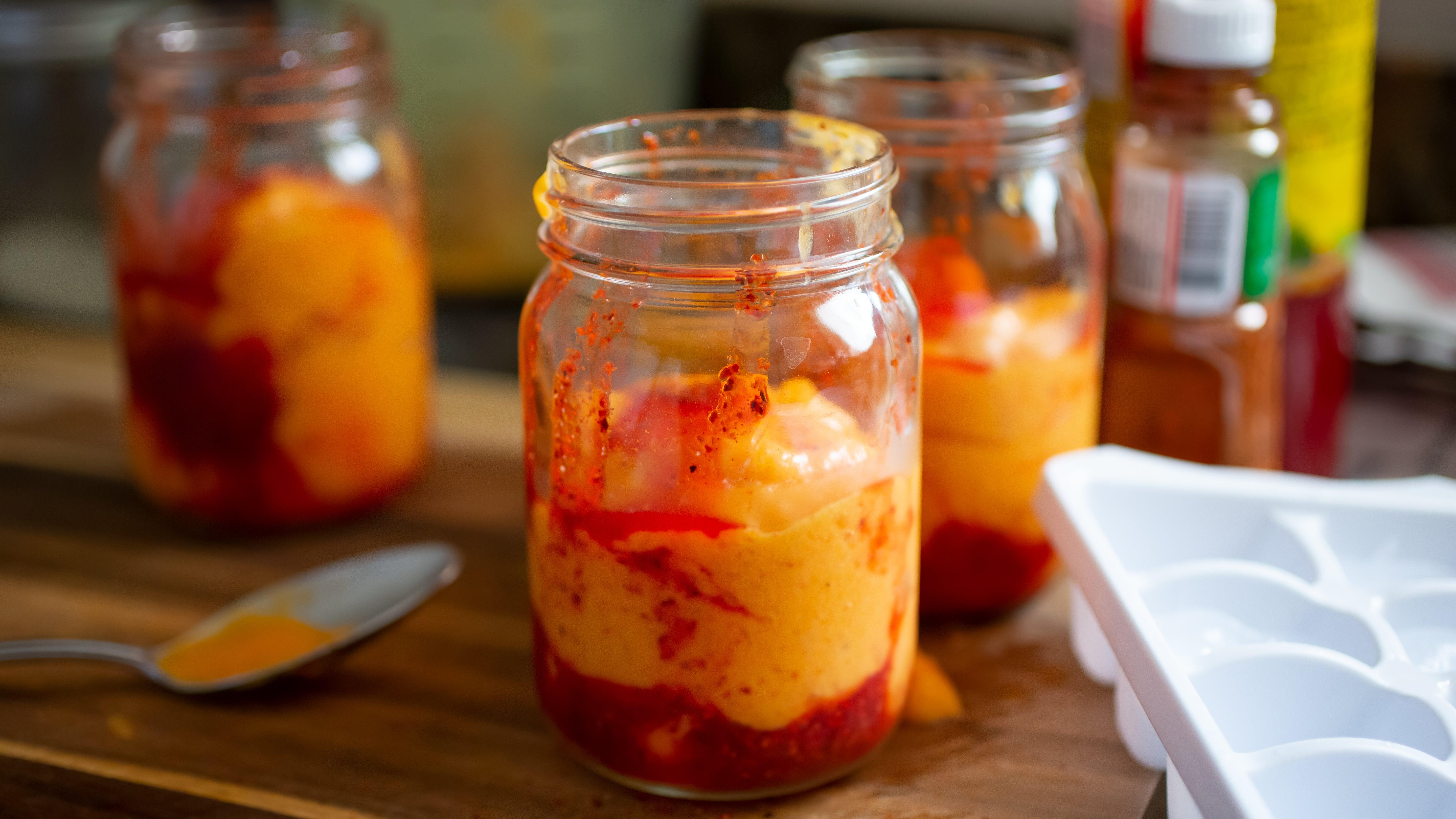Add This Mexican Sauce To Your Condiment Lineup
It hits all the sweet, sour, savory, spicy notes you crave and deserves a spot in your refrigerator.
Love a versatile dressing that elevates the flavor of a wide array of foods? Put down the ranch—just for a little while—and grab a bottle of Chamoy sauce. This tangy, spicy condiment (which also comes in powder form—more on that later) is one that everyone should have on hand while they cook and eat. Here's why.
What is chamoy?
Although chamoy is a well-known Mexican condiment, NPR explains that it actually originated in Chinese cuisine. The chamoy that I know best and that many recognize as a Mexican staple is actually a variation on a Chinese food called see mui, a snack of preserved fruit that comes in a range of sweet, savory, and sour flavors. The route by which it made its way into Mexican culture likely involves both many years of migration and the Chinese silk trade.
While see mui is closer to a salty dried apricot, chamoy is usually made from a combination of apricots, plums, and mangoes. In addition to salty and sweet flavor, chamoy also includes dried chilis and/or chili powder and lime juice for a spicy tang. To make chamoy, the fruit of choice is brined or salt cured until all the liquid is drained from the fruit. The savory fruit left behind is its own treat, referred to as saladitos, but the liquid part forms the base of chamoy.
This pickled sauce is sweet, sour, salty, and a little spicy all at the same time. Plus, it comes in a variety of consistencies, each of which are best suited to a different use. As a sauce, it can be drizzled over treats; it can be made into a paste to form a coating over various foods; or it can be used as a powder, very similar to Tajín.
How to use chamoy
I've already encouraged you to use Tajín on everything. And it just so happens that Tajin and chamoy complement each other fantastically, so I also advise you to get creative with your applications.
Probably one of the most widely recognized uses of chamoy is in a mangonada. For anyone unfamiliar with this refreshing summertime treat, a mangonada is a frozen dessert consisting of mango sorbet and fresh mango (or puree) mixed with chamoy and a dusting of Tajín. Go to any local Mexican-owned ice cream shop and they'll have it ready in minutes.
Chamoy can also be found coating a number of Mexican candies including the popular Pulparindo. This candy is made from tamarind pulp and comes in multiple flavors, including chamoy. You'll also encounter chamoy as a coating on mango gummies, peach gummy rings, peanuts, and a variety of other snacks. Street vendors often use it to top slices of jicama (a white root vegetable), cucumbers, and pork rinds.
These are just some of the more popular foods you can top with chamoy, but creative people are finding new ways to use it all the time. Stop by your local Mexican grocery store or hit the trusty "ethnic foods" aisle at the supermarket and pick up a bottle of this tantalizing flavor bomb.
